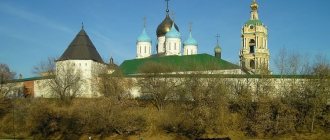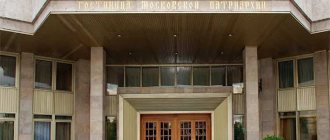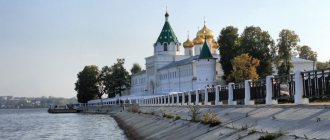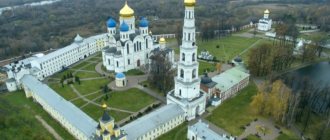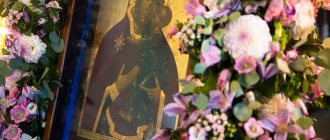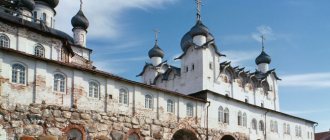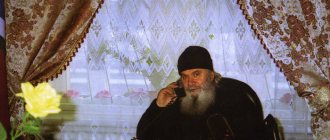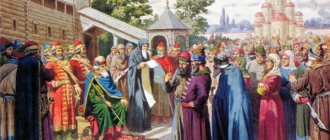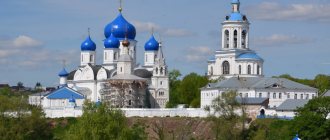A monastery founded by a disciple of Sergius of Radonezh ; the monastery, whose choir came to listen to Rachmaninov, the place where Archpriest Avvakum was kept in custody - all this is about the Andronikov Monastery . It is notable not only for these facts, but also for its beautiful architecture. It is believed that there was once a well here in the courtyard, which was dug by Sergius of Radonezh. And the Spassky Cathedral of the Spaso-Andronikov Monastery is the oldest Moscow temple that has survived completely. , a museum named after Andrei Rublev is also open on the territory of the monastery . What else is remarkable about this monastery?
Visit to the monastery, opening hours
Since the monastery is not currently active, you can visit it at any time. Those wishing to get acquainted with the architecture should come at a time when there are no services in the monastery’s churches, but pilgrims should visit here on holidays.
If you want to discover not only the Spaso-Andronikov Monastery, but also visit the Andrei Rublev Museum , please note:
- expositions and exhibitions are closed on Wednesdays;
- on Tuesdays and Thursdays the museum is open from 14.00 to 21.00;
- On other days, exhibition opening hours: 11.00-18.00.
Important! The ticket office closes 45 minutes earlier.
Abbots
- St. Andronikos (ca. 1357 - ca. 1373)
- St. Sava (ca. 1373 - ca. 1410)
- St. Alexander (c. 1410 - after 1427)
- Ephraim
- Isaac
- John (1474)
- …
- Mitrofan (1504 - 1507)
- Simeon (Stremoukhov) (1507 - August 21, 1509)
- Sergius (1509 - February 12, 1517)
- Ignatius (September 1519)
- Ephraim (February 1525)
- Zosima (1531 - 1534)
- Abraham I (1547 - 1548)
- Joseph I (February 1555 - 1566)
- Theodosius (Vyatka) (August 1566 - 1570)
- Euthymius I (1571 - 1581)
- Theodosius (? - July 20, 1584)
- Gury (mentioned May 1589)
- Vassian (1598)
- Abraham II (1606)
- Sergius (1612 - 14)
- Gennady (1625 - 1626)
- Euthymius II (January 1627 - October 26, 1628)
- Serapion July 8, 1634)
- Macarius (1635 - 1636)
- Porfiry (1637 - 1640)
- Joseph II (1641 - 1648)
- Sylvester (1648 - July 10, 1653)
- N… N… (September 1653 - 1654)
- Hermogenes (1654 - 1656)
- Dionysius (1656 - 1660)
- Paphnutius (1661 - 1668)
- Pachomius I (mentioned June 1669)
- Nikander (1672)
- Macarius (? - August 29, 1674)
- Simeon (Milyukov) (September 14, 1674 - April 9, 1676)
- Nikon (1676 - 1679)
- Joseph III (February 1681)
- Nikephoros (1681 - June 26, 1681)
- Abraham (Yukhov) (1681 - 1684)
- Pachomius II (1685)
- Abraham (? - 1687)
- Arseny (Kostyurin) (January 9, 1687 - January 12, 1692)
- Triphylliy (Inichov) (1692 - May 4, 1695)
- Theodosius (May 4, 1695 - July 30, 1709)
- Gennady (Belyaev) (1709 - May 20, 1714)
- Serapion (1714 - 1722)
- Anthony (1722 - April 12, 1722)
- Dionysius (1722 - June 15, 1724)
- Joseph IV (Savvin) (1724 - October 31, 1725)
- Gerasim (March 23, 1726 - ?)
- Hilarion (1728)
- Kleonikos (27 August 1731 - October 1732)
- Cyprian (Skripitsyn) (January 18, 1733 - May 3, 1736)
- German (Barutovich) (1737 - 1743)
- Jonah (Leszczynski) (April 18, 1744 - November 7, 1761)
- Varlaam (Glowatsky) (December 5, 1760 - November 7, 1761) acting.
Spaso-Andronikov Monastery – schedule of services
At the monastery itself, as well as at the museum, there is no hotel for pilgrims, but you can stay at the Intercession Monastery (for women) or Donskoy (for men). Both monasteries, like the Andronikov Monastery, are located in the Central Administrative Okrug. Where to stay for pilgrims
- The hotel at the Donskoy Monastery offers from two to six-bed rooms. There is hot water, toilets, washbasins and showers on the floor. Check-in is possible until 21.00.
- The hotel at the Intercession Monastery is equipped to modern standards and has rooms of different sizes.
How to get there
It is convenient for travelers and pilgrims to start their journey to the monastery complex from the Moscow metro station “Ilyich Square”. From the railway platform to the monastery gates there are 890 m, which can be overcome in 10 minutes.
Route: turn left from the station, walk along Sergius of Radonezh Street to Andronevskaya Square, turn right on the square, walk along the path of the square past the monument to Rublev to the entrance of the monastery. You can make your journey easier and take one stop to the square on the 55th, 125th, 40th bus or 45th trolleybus.
Alternative route options start from the “Rimskaya” and “Marksistskaya” metro stations.
| Metro station | Distance | How to get there | Travel time |
| Ilyich Square | 890 m | On foot | 10 min |
| Roman | 1 km | On foot | 12 min |
| Marxist | 1.4 km | Bus 567 Stop – “Andronevskaya Square” | 3 stops – 5 min., then 330 m on foot – 4 min. The entire journey will take 9 minutes. |
History of the Spaso-Andronikov Monastery
- This monastery was founded by Metropolitan Alexy . It is believed that he made a vow to build a cathedral in honor of the holiday on the day of which he would reach the Golden Horn Bay. This happened in 1354 , on the Feast of the Savior Not Made by Hands. The location for construction was chosen by the Metropolitan himself - at the confluence of the Yauza and Golden Horn rivers. Here the roads to the Volga cities and to the Black Sea and Byzantium crossed.
- Regarding when the Spassky Cathedral of the Spaso-Andronikov Monastery was erected, researchers disagree, citing dates from 1357 to 1427 . According to one version, the Cathedral of the Holy Image of the Savior Not Made by Hands of the Spaso-Andronikov Monastery was consecrated with an icon brought by the Metropolitan in 1356 from Constantinople.
Did you know? Dmitry Donskoy, returning after the victory in the battle on the Kulikovo Field, took communion in this monastery. - Some of the soldiers who died in this battle are buried on the territory of the monastery. In 1795, work began on the construction of the bell tower, money for which was allocated by a millionaire Moscow merchant. Its construction ended in 1803.
- During the war with Napoleon, this monastery was plundered, and then seriously damaged by fire. In Soviet times, the monastery was closed since 1918 , and there was a concentration camp of the Cheka for political criminals, a colony for street children, rooms for workers of one of the local factories, and the People's Commissariat of Defense was located.
- In the period from 1927 to 1932, the necropolis of the Spaso-Andronikov Monastery was destroyed (Andrei Rublev, among others, was buried here), and the bell tower was destroyed. It is believed that Andrei Rublev was a monk of this monastery, but there is no documentary evidence of this.
- In 1947, they made a decision to open a museum, which was approved only two years later, and began to be implemented another decade later. The museum received its first visitors in 1960.
- In 1989, the monastery was returned to the church, but it is not yet functioning.
Architectural and cultural landmarks
- Church of the Archangel Michael - built under the patronage of the wife of Peter I, Evdokia Lopukhina (there was a family necropolis of this family in the monastery). The family tomb of this family was located on the lower tier. Today the church is a museum exhibition.
- The Farewell Chapel was erected on the spot where St. Sergius of Radonezh said goodbye to his disciple Andronik, the first abbot of the Spaso-Andronikov Monastery.
- The Cathedral Church of the Savior Not Made by Hands is the first stone monastic creation, a single-domed church with a distinctly austere interior. In the first third of the last century, excavations were carried out here, during which the relics of saints and the ancient altar of the temple were found. Fragments of the frescoes with which Andrei Rublev painted the Spassky Cathedral in the mid-15th century have survived to this day.
- The refectory chamber , a monument preserved from the 16th century, was one of the first such buildings of Russian architects. Its vaults are supported by a single pillar. The Refectory Chamber houses museum exhibitions.
- The Museum of Ancient Russian Art is a unique museum whose holdings contain more than ten thousand ancient Russian works of art, including icons, handwritten books, church utensils, and bells. Valuables from closed monasteries were brought here. This is how more than one tomb-sarcophagus of the 18th century ended up on the territory of the Spaso-Andronikov Monastery. The most ancient of them is the slab of Praskovya Kleshnina, and the best preserved monument is Maria Golovina. As for the necropolis of the Andronikov Monastery itself, only two slabs were restored: to Fyodor Volkov, the founder of the Russian theater, and also to the philanthropist Ivan Medvednikov.
- In 1967, a monument to Andrei Rublev was also erected on the territory of the monastery , which was later replaced by another sculpture, which is still located here today.
Interior decoration
4 main pillars divide the interior of the cathedral into 3 elongated rooms (nave). A cylindrical vault, supported by pillars, forms a cross under the dome at the intersection of the axial lines. The walls of the temple are decorated with vertical flat and narrow projections, which visually increase the height of the prayer room.
There are no princely choirs in the temple, concealing the space. 8 windows of the drum, window openings of the main volume and light slits of the central skylights create three registers of daylight sources, which promotes uniformity of lighting and brings a sense of transparency and rational organization to the interior.
The temple murals by famous painters Andrei Rublev and Daniil Cherny were almost completely cleaned off in the 18th century, and the cathedral was no longer decorated with frescoes. Small fragments of painted canvases by legendary painters have been preserved. Framed by the window of the church altar, one can see a floral ornament on a rich blue background, enclosed in interconnected circles of the same size.
In the 90s of the 20th century, during the restoration of the building, a heating and lighting system was designed, the interior of the temple was transformed: the elevation of the altar and the throne were redesigned. During the repair work, about a dozen white stone blocks decorated with carved decor were discovered.
There is an assumption that the altar barrier was made from relief, decorative stones in the original temple. Now samples of ancient stone decoration serve as exhibits of the monastery museum of ancient art.
The cathedral iconostasis underwent changes throughout the entire period of the temple's existence. At the end of the 18th century, icons were arranged in 4 tiers, the design had a lush, expensive decor.
Iconostasis before restoration
At the beginning of the next century, the altar partition in the classical style was distinguished by its exquisite severity and compositional dominance of the central fragment. In the mid-19th century, it was replaced by a luxurious gilded iconostasis with figured carved decor.
The modern wooden iconostasis is endowed with conciseness and simplicity. The walls of the cathedral are decorated with icons of a new type. There are not many of them. On one of the walls there is a unique image of the third abbot of the monastery, St. Alexander, under whom the stone Spassky Church was built. You will not see an icon with his image anywhere else.
Shrines of the Spaso-Andronikov Monastery in Moscow
- The image of the Savior Not Made by Hands is the icon of the foundation, which is the most revered. It was considered lost for a long time, but in 1999 it was found in the Novodevichy Convent, in the storerooms of the Historical Museum. There is a list of this icon in the Spassky Cathedral.
- The icon of Andronicus and Savva , the first abbots of the monastery - this shrine was also considered lost.
- The relics of six saints that were discovered during excavations at the Spassky Cathedral. Not only the relics were preserved, but also the monastic accessories.
Spaso-Andronikov Monastery – photo
- In past centuries, the monastery delighted people with its architectural ensemble.
- The Spassky Church is called the oldest Moscow building.
- Monument to Andrei Rublev, who was presumably buried in this monastery.
- In the Museum of Ancient Russian Art you can not only see many ancient books and church utensils, but also learn how the Spaso-Andronikov Monastery was born.
- The monastery is the decoration of this part of Moscow.
Daily life of the temple
In addition to divine services, the clergy and the parish of the church are doing a lot of work to restore church values and spiritual traditions. The Orthodox community participated in the arrangement of a monastery in the Rostov region and the establishment of a monastery in the Rostov Epiphany monastery.
Parishioners helped in the search for the original location of the throne of the ancient Church of the Savior, as a result of which burials were discovered and shrines were discovered. The parish received approval and blessing from the highest clergy for subsequent survey work.
An icon painting workshop is organized at the cathedral - one of the best in the country. Talented painters in their works follow church canons, traditions and techniques of ancient Russian temple painting, and restore bit by bit the knowledge forgotten in Soviet times.
The most famous tradition of the monastery of the All-Merciful Savior - the Znamenny chant - has been renewed. A school of ancient Russian singing was organized at the cathedral, ancient music manuscripts were deciphered and published.
Pilgrimage plays a big role. Travel is organized to places sacred to the Orthodox faith for the purpose of prayer and worship. The church parish is working to republish ancient books, publish periodical Christian literature, and form a monastery library. The official website has been opened.
